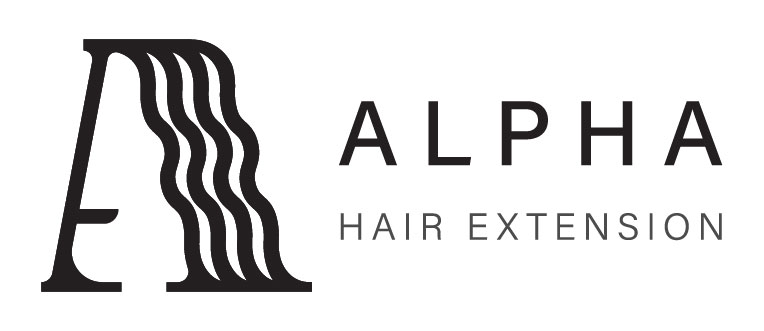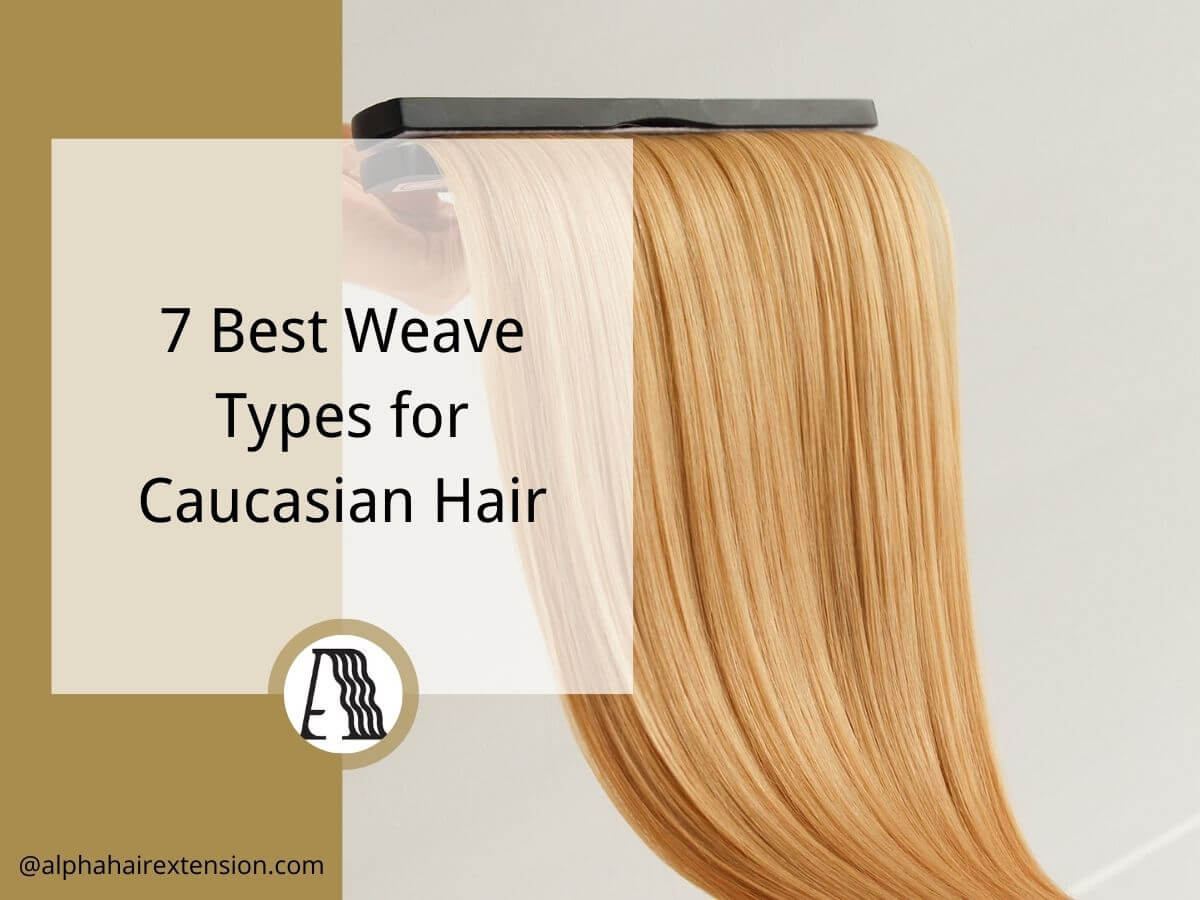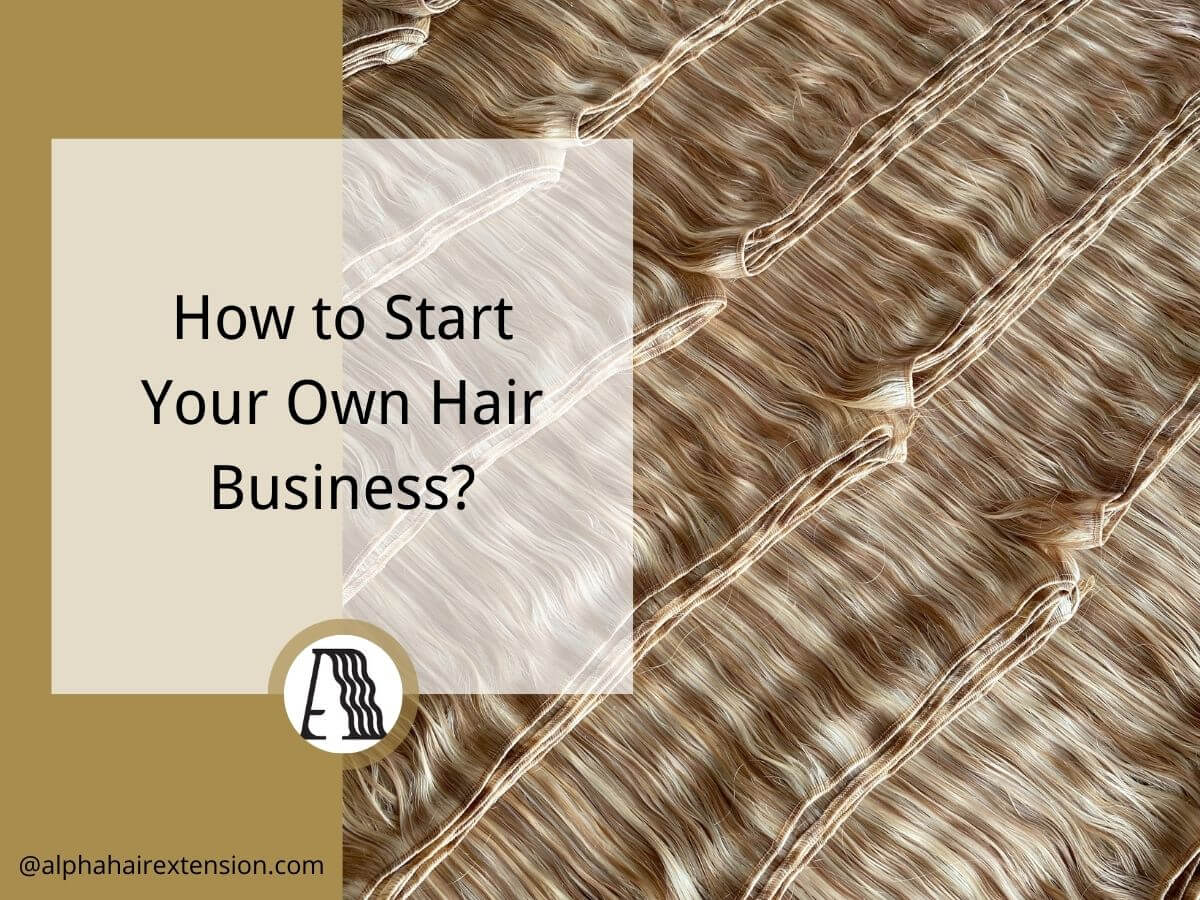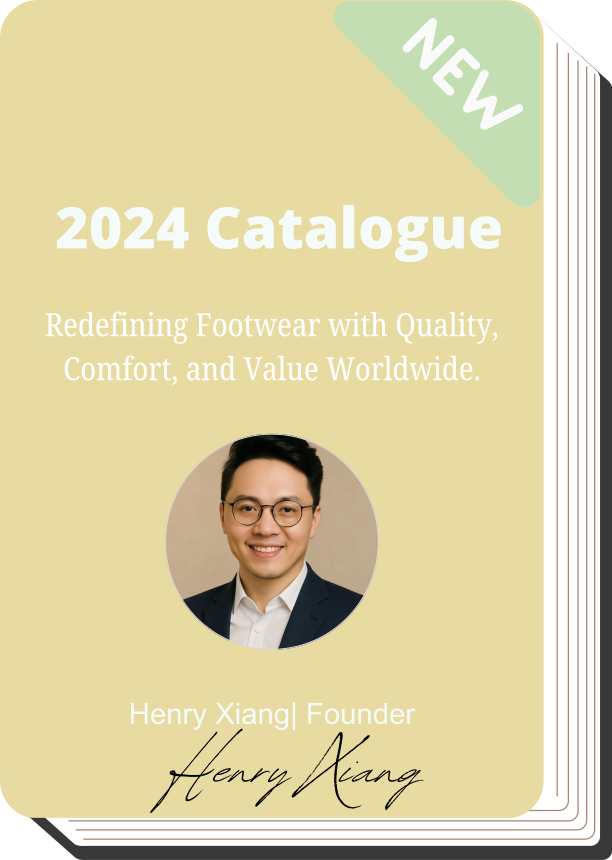A while back, I had a client who struggled for years with hair loss. She had tried wigs, thickening sprays, and even cheap toppers, but nothing looked or felt right.
When she finally found a high-quality, well-matched hair topper, it was life-changing. She told me, “I finally feel like myself again.”
That’s why I’m passionate about helping business owner in the beauty industry find the right topper—not just any topper. The truth is, some are too thick, some don’t blend well, and some aren’t breathable enough for all-day wear.
In this guide, I’ll break down the best types of hair toppers, including:
- The best types of toppers for different levels of hair loss
- Which base materials (lace, silk, monofilament) work best for different needs
- How to choose between clip-in, tape-in, and semi-permanent options
By the end of this guide, you’ll have everything you need to confidently pick a hair topper that works for your clients.
So let’s start!
1. Lace Base Hair Toppers
Lace base hair toppers are known for their lightweight and breathable construction. The lace material mimics the scalp, allowing for a seamless blend with your natural hair. These toppers offer excellent ventilation, making them a great choice for hot climates or those prone to sweating. However, lace bases can be delicate and require careful handling to prevent tearing.
Material Used
The lace type and construction make all the difference. Here’s what you need to know:
- Swiss Lace – Soft, thin, and undetectable on the scalp. But it’s fragile and doesn’t last as long.
- French Lace – Stronger and more durable. Slightly thicker, but it holds up better with daily wear.
- Hair Type – Human hair looks the most natural, but high-quality synthetic can be a budget-friendly alternative.
- Knotting Method – Hand-tied knots create a realistic scalp effect, but bleaching or single-knot techniques improve the finish.
Market Demand and Pricing Insights
Lace base toppers are a best-seller for a reason. They mimic a natural scalp and work for different hair types.
But pricing varies. Swiss lace commands a premium because it disappears against the skin, while French lace is more affordable and lasts longer. Businesses catering to high-end clients might prefer Swiss lace, while those selling to everyday users may lean toward French lace for better longevity.
Quality also affects profit margins. Cheap lace can lead to higher return rates. Investing in reliable manufacturers saves money in the long run.
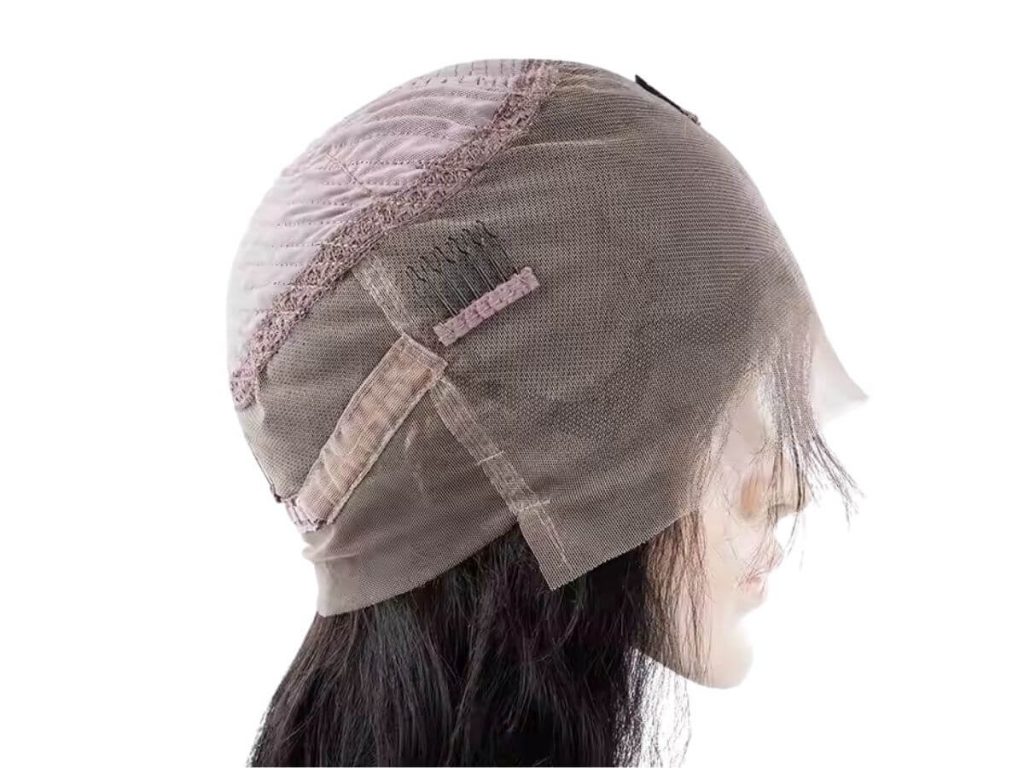
2. Silk Base Hair Toppers
Silk base hair toppers are known for their flawless scalp appearance. Unlike lace, they completely hide knots, making the hair look as if it’s growing naturally. Many businesses stock them as a premium option, but they aren’t for everyone.
I learned this firsthand when I tested a batch myself. While the realism was impressive, some customers found the base too thick and less breathable. That’s when I realized that silk base toppers serve a specific market.
Material Used
A silk base isn’t just one layer—it’s a carefully constructed system designed for realism.
- Silk Top Layer – Hides knots, creating a smooth and natural-looking scalp.
- Middle Lace Layer – Adds structure and helps secure hair strands in place.
- Bottom Weft or Lace Layer – Provides ventilation and durability.
- Hair Type – Typically made with high-quality human hair for a seamless blend.
Market Demand and Pricing Insights
Silk base toppers are priced higher due to their realistic appearance and complex construction. They appeal to customers looking for premium-quality solutions.
However, not all buyers prefer them. The thickness can make blending harder, and some users find them less breathable than lace. Businesses targeting high-end clients may find silk base toppers profitable, but for those catering to everyday wearers, lace might be the better choice.
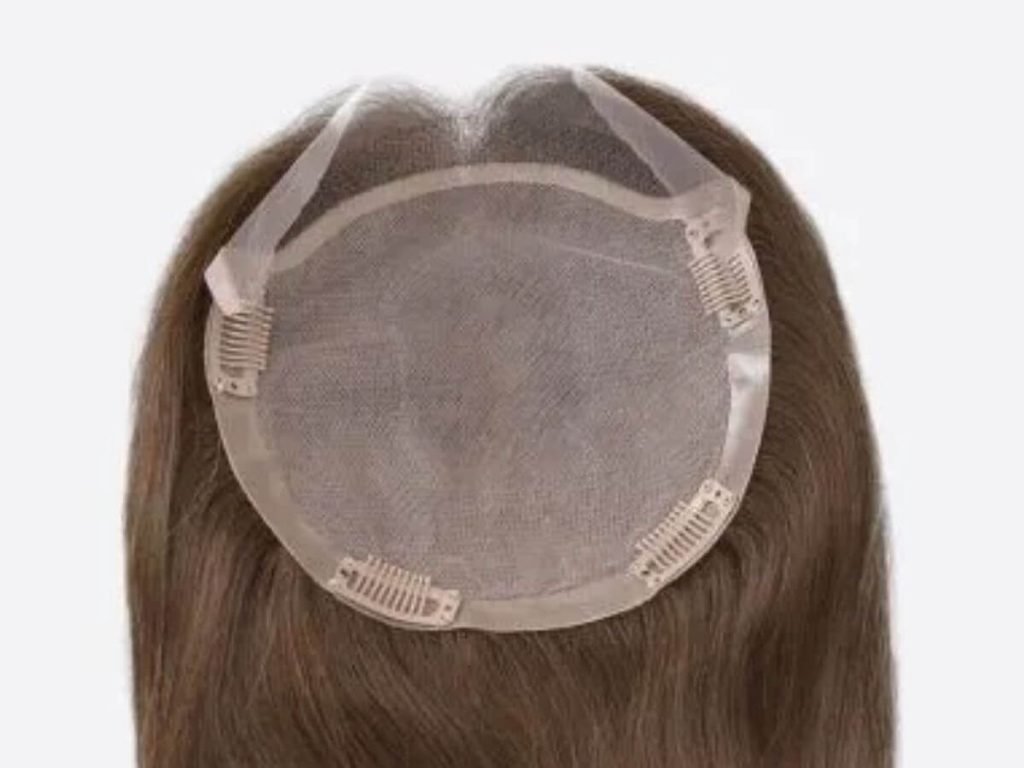
3. Mono Base Hair Toppers
Monofilament (mono) base toppers are made from fine mesh material, allowing hair to be hand-tied in individual strands. This creates a natural movement and allows for multi-directional parting. Mono bases are more durable than lace but offer less breathability compared to lace toppers.
Material Used
Mono base toppers are built for strength while maintaining a realistic scalp effect. Here’s what goes into them:
- Monofilament Mesh – A fine yet strong material that allows hair strands to be hand-tied for a natural look.
- Single or Double Layer Construction – Single layers are lightweight, while double layers offer more durability.
- Ventilation Design – The mesh allows airflow, making it more breathable than silk but stronger than lace.
- Hair Type – Commonly paired with human hair for a long-lasting, natural appearance.
Market Demand and Pricing Insights
Mono base toppers are a go-to option for long-term wearers. They last longer than lace but don’t have the thickness of silk, making them a middle-ground choice.
Pricing depends on the type of monofilament used and whether it’s a single or double layer. Single-layer mono bases are more affordable, while double-layer versions cost more but last longer. Businesses serving clients who prioritize durability should consider stocking them.
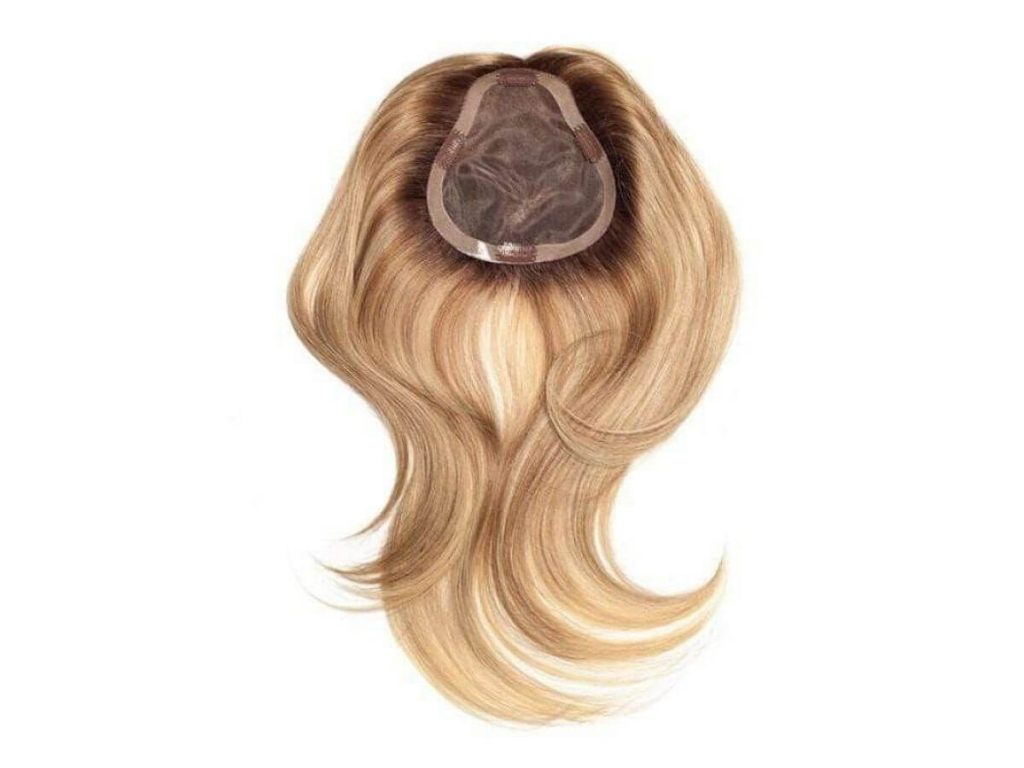
4. Polyurethane (PU) Base Hair Toppers
The first time I handled a PU base hair topper, I noticed something different right away. It felt smooth, almost like skin. Unlike lace or mono bases, it had a slick, flexible surface designed for a secure grip.
If you’re considering stocking PU base toppers, you need to know their strengths—and their drawbacks. They offer strong adhesion, but they’re not for everyone.
Material Used
PU bases are designed for durability and secure attachment. Here’s what makes them unique:
- Polyurethane Skin – A thin, flexible layer that mimics the scalp and allows strong adhesion.
- Injection or V-looped Hair – Hair strands are injected or looped for a knot-free, natural appearance.
- Thickness Options – Ultra-thin PU is undetectable but wears out faster, while thicker PU lasts longer but is less breathable.
- Adhesive Compatibility – Works best with tapes or liquid adhesives for a strong hold.
Market Demand and Pricing Insights
PU base toppers are popular for customers who need a strong grip and a scalp-like appearance. They work well for those who use adhesives instead of clips.
However, they are not as breathable as lace or mono bases. The lack of airflow can make them uncomfortable in hot climates. Pricing varies based on thickness, with ultra-thin PU commanding a premium due to its realistic look. Businesses catering to customers who prioritize security over ventilation will find PU toppers a strong seller.
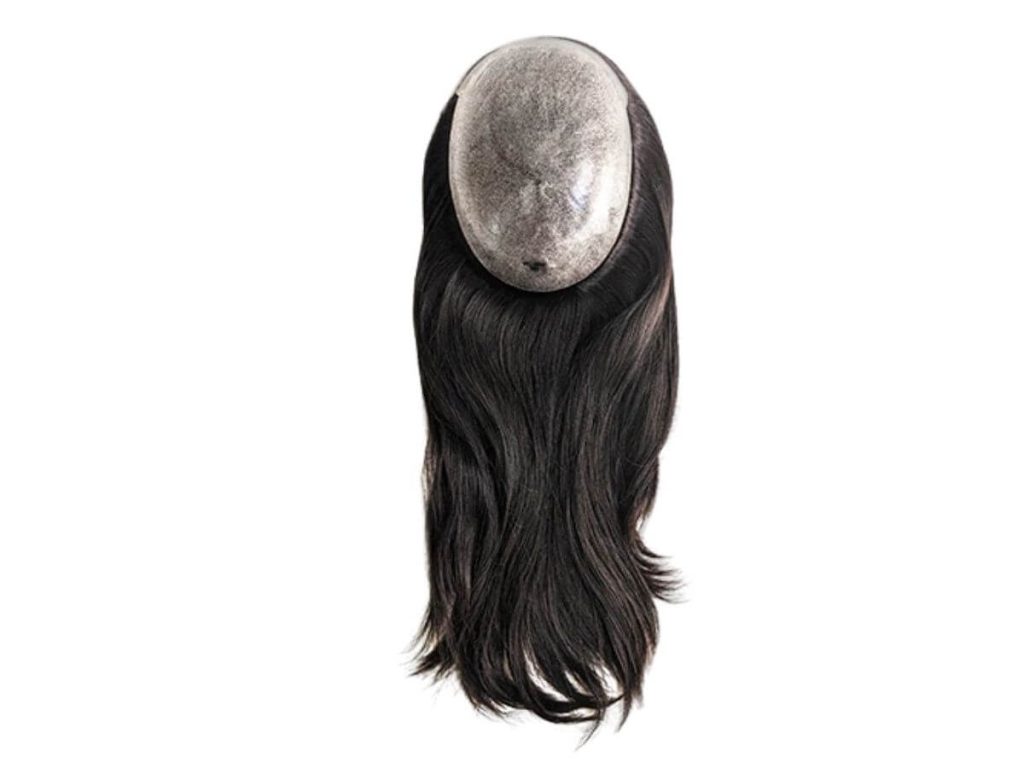
5. Clip-In Hair Toppers
Clip-in hair toppers are one of the easiest solutions for adding volume and coverage. They snap in place within seconds, making them a top choice for your clients who want a non-permanent option. But not all clip-ins are made the same. Some feel too heavy, while others have weak clips that don’t hold securely.
I once tested a batch with flimsy clips that kept slipping. Customers returned to them quickly, and I learned an important lesson—clip strength and base quality matter just as much as the hair itself.
Material Used
A well-made clip-in topper combines comfort with a secure hold. Here’s what goes into them:
- Base Material – Available in lace, mono, silk, or PU bases, each affecting durability and realism.
- Clips – High-quality stainless steel with silicone strips prevents slipping and protects natural hair.
- Hair Type – Options include human hair for longevity or synthetic for a budget-friendly alternative.
- Weight & Density – A balanced design prevents pulling on the scalp for all-day comfort.
Market Demand and Pricing Insights
Clip-in toppers are always in demand because they don’t require glue, tape, or professional installation. Businesses that offer these typically see high repeat orders.
Pricing depends on hair type and base material. Human hair clip-ins are a premium choice that lasts longer, while synthetic versions move quickly in high-volume sales. Offering both can help reach different market segments.
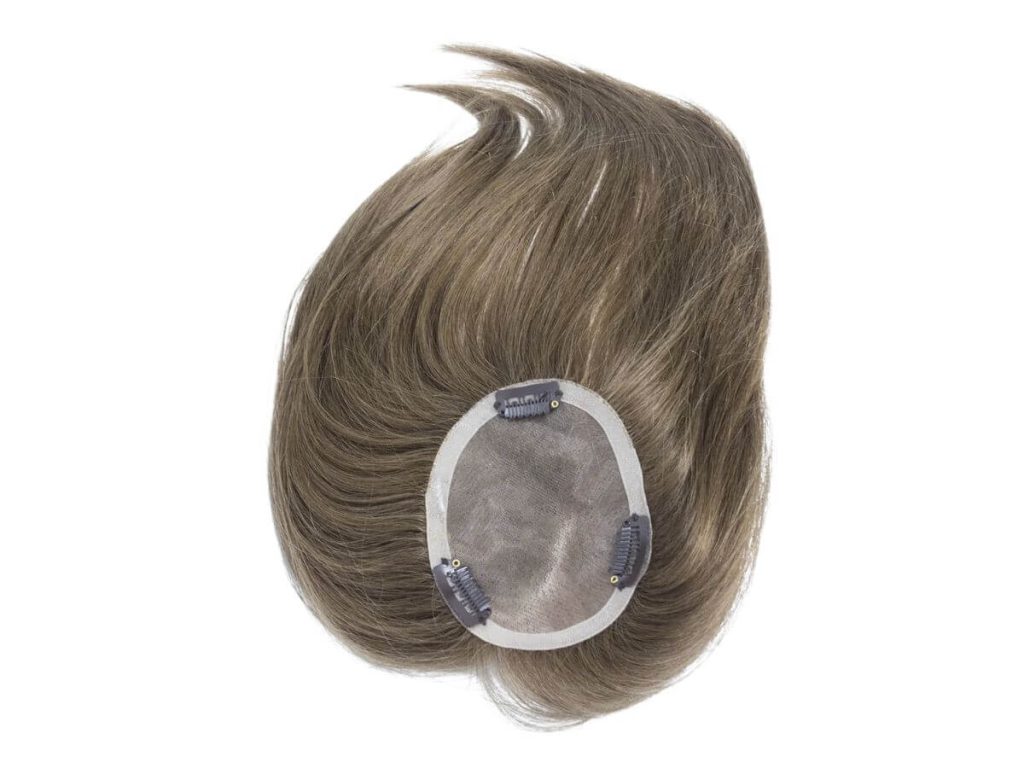
6. Tape-In Hair Toppers
Tape-in hair toppers offer a seamless, lightweight solution for extended wear. Unlike clip-ins, they lie flat against the scalp, making them nearly invisible. Many businesses love stocking them because they offer a more natural look and longer-lasting attachment.
Material Used
A high-quality tape-in topper combines flexibility, durability, and secure adhesion. Here’s what makes them work:
- Base Material – Typically made with PU, lace, or mono bases for a scalp-like effect.
- Adhesive Strips – Medical-grade, hypoallergenic tape ensures a strong hold without damaging natural hair.
- Hair Type – Available in human hair for longevity or synthetic for a cost-effective option.
- Weight & Density – Lightweight design prevents tension and pulling for comfortable extended wear.
Market Demand and Pricing Insights
Tape-in toppers are popular among customers looking for a semi-permanent solution without full wig coverage. They work well for those wanting a secure hold without clips or glue.
Pricing depends on the adhesive quality, base material, and hair type. Human hair tape-ins command a higher price due to their durability, while synthetic options sell in bulk at lower price points. Businesses targeting long-term wearers will find human hair tape-ins more profitable, while synthetic options cater to budget-conscious buyers.
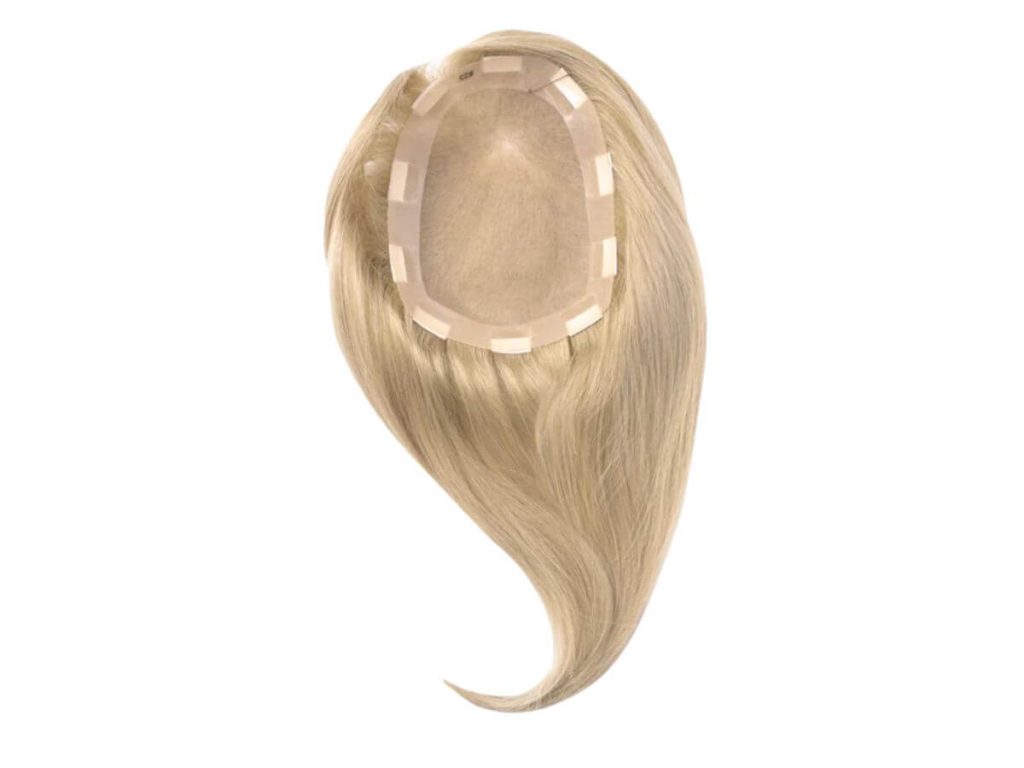
7. Integration Hair Toppers
Integration hair toppers aren’t like other toppers. They don’t just sit on top of the hair—they blend directly with the wearer’s natural strands. This makes them a favorite for your client wanting volume without a full-coverage piece.
Material Used
A well-made integration topper allows natural hair to be pulled through without tangling or slipping. Here’s what goes into them:
- Mesh or Mono Base – Features open wefts or a netted structure for easy hair integration.
- Elastic or Silicone Strips – Added for flexibility and better grip on the scalp.
- Hair Type – Typically made with human hair for a seamless blend, but synthetic versions exist.
- Attachment Options – Some come with clips for added security, while others rely solely on integration.
Market Demand and Pricing Insights
Integration toppers are highly sought after by those looking to enhance their hair volume long-term. They appeal to clients who want a more natural, breathable option without the bulk of traditional toppers.
Pricing depends on the base material, hair quality, and density. High-quality human hair integration toppers sell at a premium, while synthetic versions offer a more budget-friendly choice. Businesses catering to long-term wearers will see strong demand for well-constructed, comfortable designs.
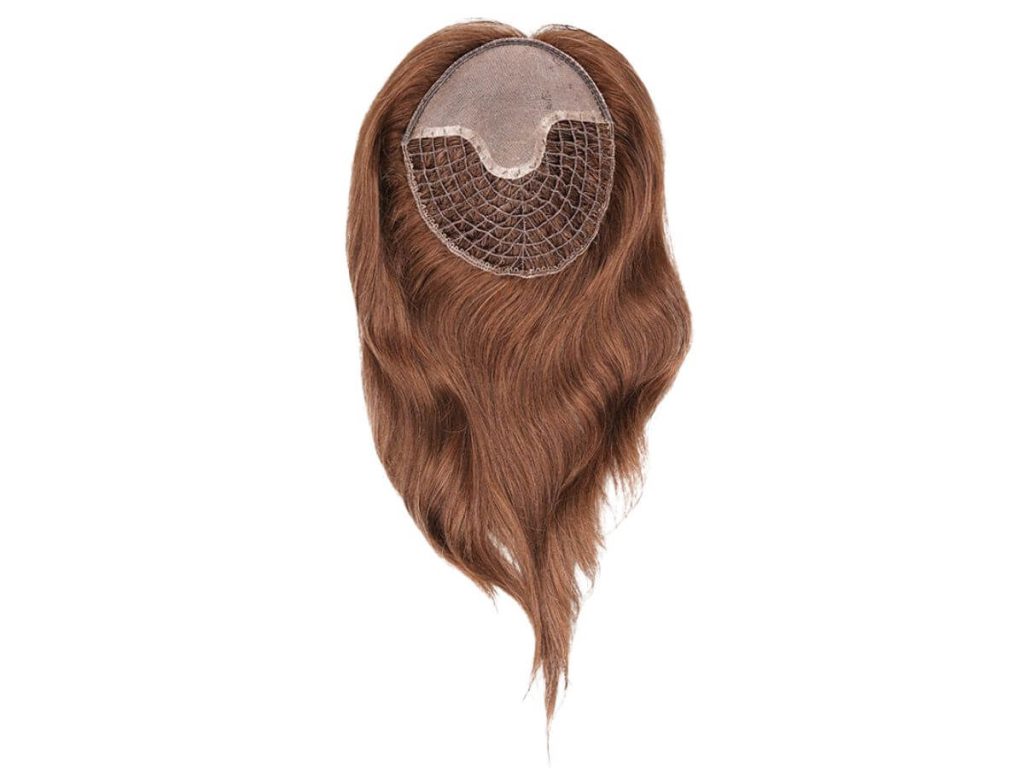
8. Human Hair Toppers
There’s a reason human hair toppers dominate the market. They look and feel real because they are. They move naturally, blend seamlessly, and can be styled just like growing hair.
I once received a batch that claimed to be 100% human hair. After a few washes, the strands felt stiff—blended with synthetic fibers. That experience taught me a valuable lesson: sourcing matters. If you’re selling human hair toppers, you need to know exactly what you’re getting.
Material Used
Not all human hair is the same. Here’s what affects quality and pricing:
- Virgin Hair – Never processed, the highest quality, long-lasting, and most expensive.
- Remy Hair – Cuticles aligned in one direction, reducing tangling and extending lifespan.
- Non-Remy Hair – Cuticles misaligned, often coated with silicone to appear smooth (until washed).
- Hair Origin – Indian, Chinese, European, and Brazilian hair all have different textures, thicknesses, and costs.
Market Demand and Pricing Insights
Human hair toppers are in high demand, especially for long-term wearers. They last longer than synthetic options and can be washed, dyed, and heat-styled.
Pricing depends on hair quality, origin, and processing. Virgin Remy hair is the most expensive but offers the best longevity. Non-Remy hair is cheaper but may not hold up over time. Businesses that prioritize quality will attract repeat buyers and fewer returns.
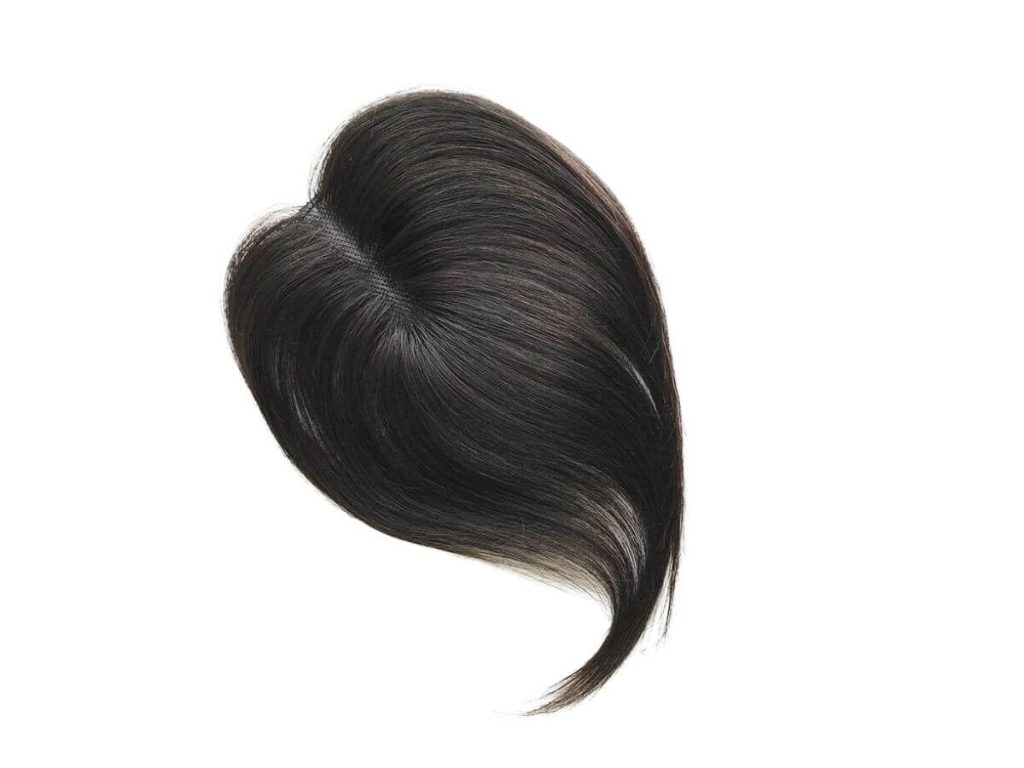
9. Synthetic Hair Toppers
Synthetic hair toppers have come a long way. Years ago, they looked stiff and unnatural. Today, high-quality synthetic fibers mimic real hair so well that many customers can’t tell the difference.
Synthetic hair toppers are made from artificial fibers designed to mimic human hair. They are more affordable and come pre-styled, meaning they require minimal maintenance. However, they cannot withstand heat styling and may have a slightly artificial sheen.
Material Used
Synthetic toppers are made from man-made fibers designed to mimic human hair. The quality of these fibers determines how realistic and long-lasting they are.
- High-Heat Synthetic Fibers – Can handle some styling but have limits on heat exposure.
- Kanekalon & Toyokalon Fibers – The most natural-looking options, soft with realistic movement.
- Standard Synthetic Fibers – More affordable but prone to frizz and shine under bright light.
- Pre-Styled Memory Fibers – Hold their shape, making them low-maintenance and convenient.
Market Demand and Pricing Insights
Synthetic toppers are a budget-friendly alternative to human hair. They are popular with customers looking for an easy, ready-to-wear option without the high cost.
Pricing varies based on fiber quality and base construction. Kanekalon-based toppers are more expensive but look more natural. Lower-end synthetics are affordable but may not last as long. Businesses that stock different quality levels can meet a wider range of customer needs.
Synthetic Hair Toppers are best for budget-conscious individuals who want a low-maintenance solution with a natural look. However, they cannot be heat-styled and tend to have a shorter lifespan than human hair toppers.
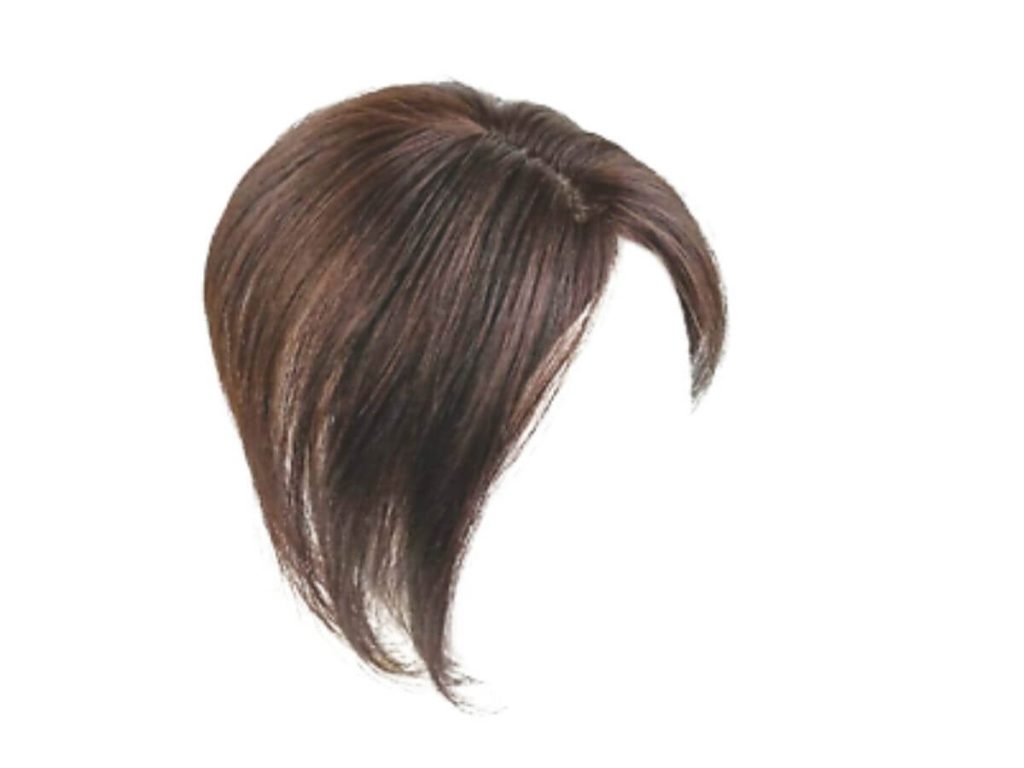
10. Heat-Friendly Synthetic Hair Toppers
Heat-friendly synthetic hair toppers seem like the perfect solution. They offer the affordability of synthetic hair with the ability to be styled with heat tools. For businesses, they can be a strong seller—if the quality is right.
I learned the hard way that not all heat-friendly fibers hold up well. A supplier assured me their toppers could handle heat, but customers complained about frizz and melting. That’s when I realized that proper fiber quality and heat limits matter just as much as the price.
Material Used
Heat-friendly synthetic toppers are designed with special fibers that allow controlled heat styling. Here’s what goes into them:
- Heat-Resistant Synthetic Fibers – Can withstand heat up to 250–350°F, but too much can damage them.
- Silicone-Coated Strands – Reduces frizz and helps maintain smoothness.
- Memory Fiber Technology – Allows pre-set styles to hold longer, reducing daily maintenance.
- Blended Synthetic Options – Some include a mix of human hair for a more natural texture and movement.
Market Demand and Pricing Insights
Customers love heat-friendly toppers because they offer more styling freedom than standard synthetics. But not all of them know how to use them correctly, which can lead to early damage.
Pricing depends on fiber technology, base quality, and heat resistance levels. High-end options look and feel more natural but come at a higher cost. Businesses that provide clear styling instructions can reduce complaints and increase repeat sales.
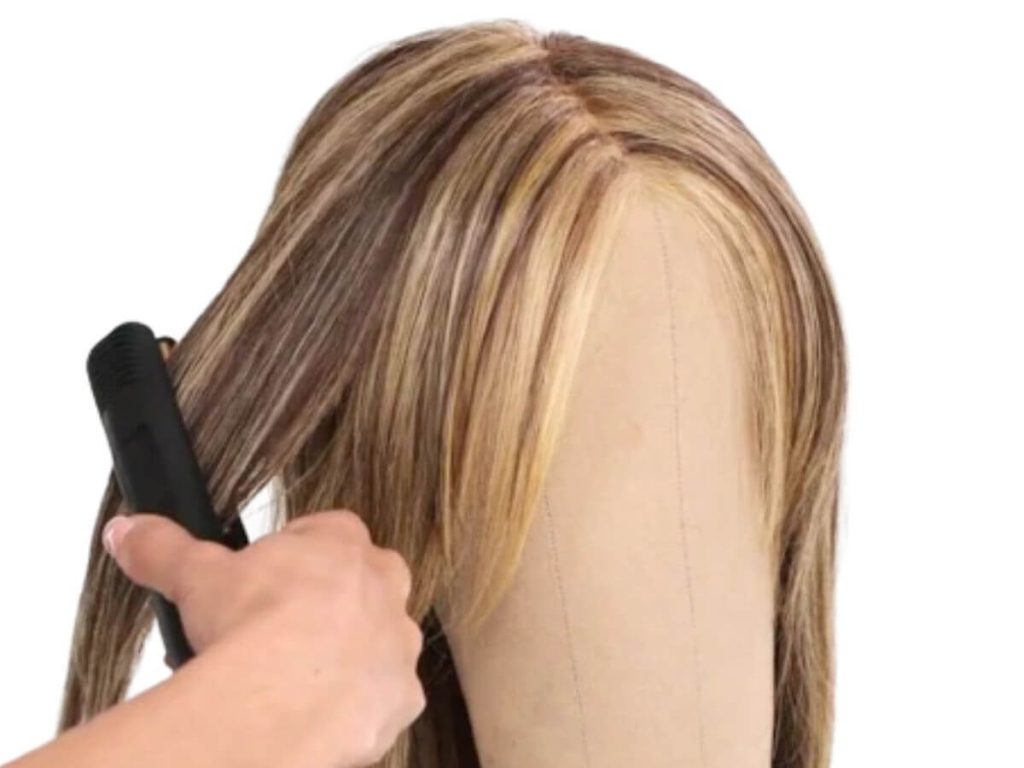
Conclusion
Choosing the best hair topper isn’t about picking the most expensive option—it’s about finding the right fit for your customers.
Each type has strengths, from lace’s breathability to silk’s realistic scalp, from clip-ins’ convenience to PU’s secure hold.
I learned through trial and error that quality and construction matter just as much as style. The right topper can keep customers happy. The wrong one? Lost sales and returns.
Now it’s your turn. What topper works best for your business?
Let’s find the right one together. Contact us today!
Explore More Helpful Resources
There’s more to explore! Check out our additional product selections to find exactly what you’re looking for:
Still haven’t found what you’re looking for? Don’t hesitate to contact us. We’re available around the clock to assist you.
